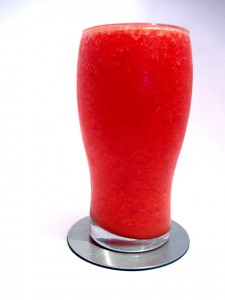BBC News reported that researchers from Glasgow University have found that as much as 450 calories per day are coming from pure juice and smoothies, much of which is sugar in the form of Fructose!!!
This seems a lot so is fruit juice unhealthy?
Most of us have come to assume that fructose is healthy but increasingly is has been shown that fructose (fruit sugar) can be as bad as glucose, and significant amounts can contribute to type 2 diabetes and heart disease. A study published in the European Journal of Clinical Nutrition showed that high levels of fructose contribute to increased fat and a lowered metabolic rate which can lead to weight gain.
Fruit juice that has been robbed of its fibre and broad range of nutrients is basically a concentrated source of sugar that lacks the supportive nutrients to help it digest and metabolize.
When we eat a piece of fruit we consume the whole fruit including the skin, the fibrous flesh as well as the fruit sugar. The action of chewing the whole fruit means that the sugars from the fruit are released slower, whereas drinking juice involves no fibre and no chewing. The amount of fructose in one apple is significantly lower than a glass of juice. An 8 oz glass of clear apple juice may contain 3-4 apples, and can be downed in seconds, whereas 3-4 apples will take quite a while – and it’s unlikely you’d eat that many in one go.
The edible skins of some fruits contain pigments, including carotenoids and flavonoids, which are beneficial to our health, but many juicing processes remove the skin and pulp. Whilst some juice contains ‘bits’, it doesn’t equate to the whole pulp. Even though smoothies contain pulp, because they are blended, very little chewing is required and a large amount of fruit can be consumed in a short space of time.
The healthiest way to enjoy fruit is naturally, as the whole fruit, but if you are going to have juice, limit to once per day, diluted 50:50 with water to reduce the sugar.

